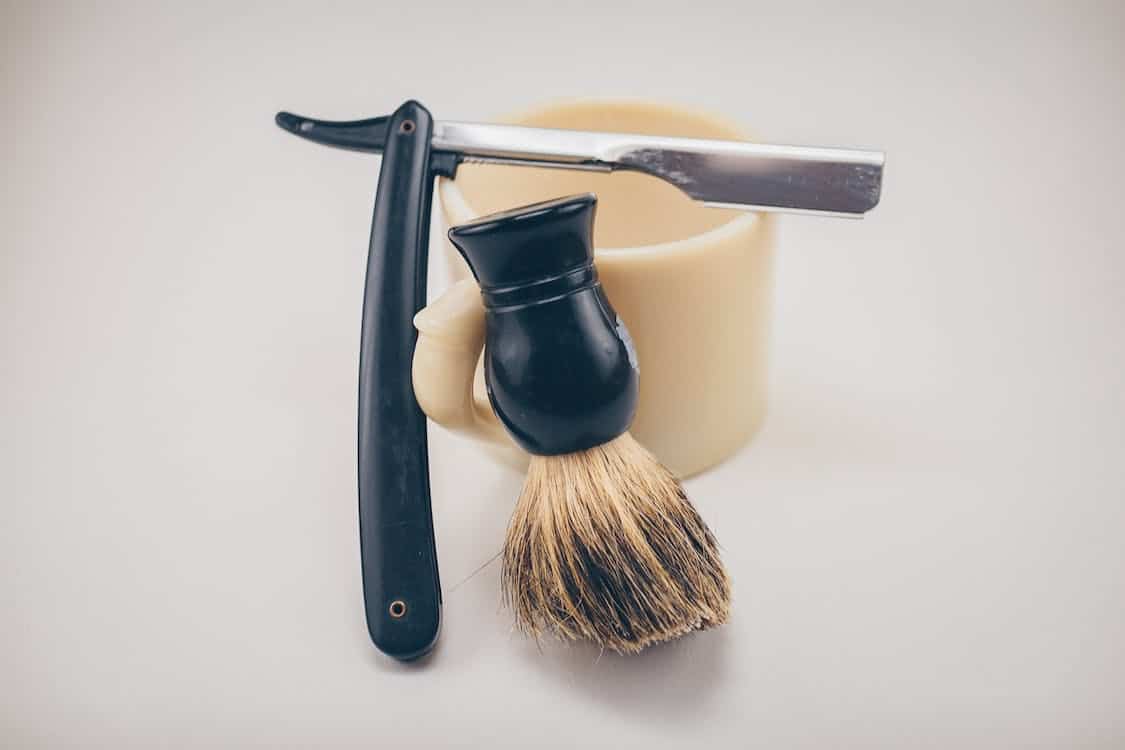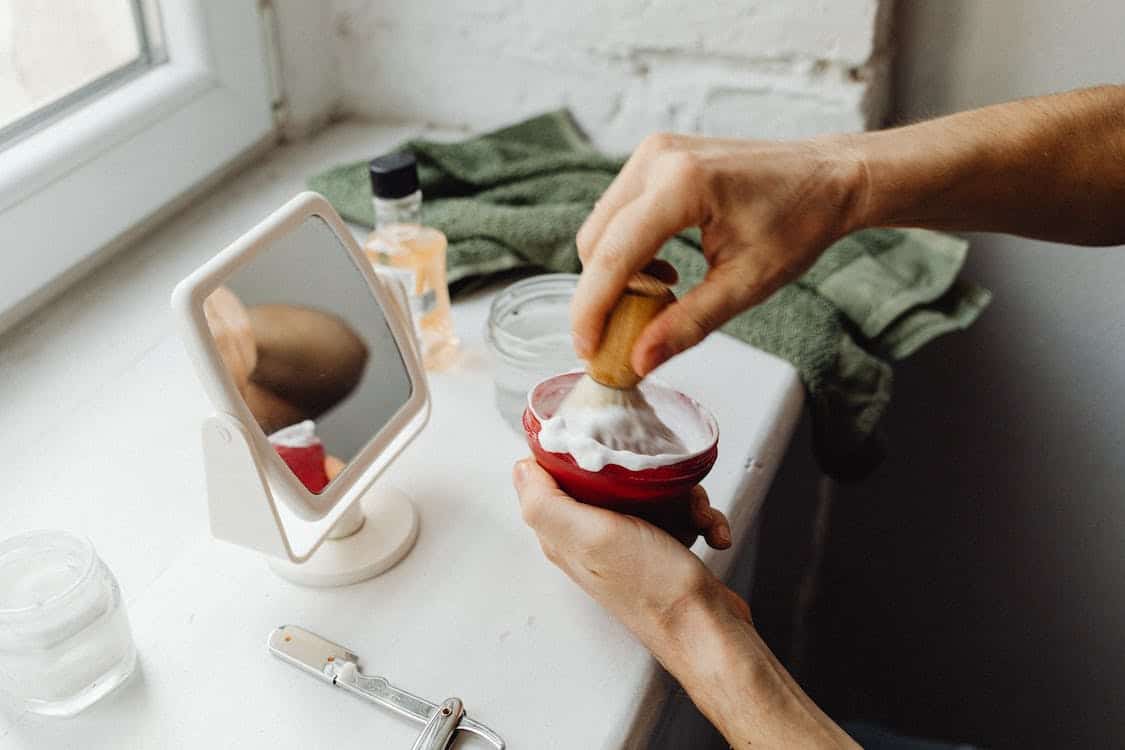Getting a smooth, comfortable shave without nicks, cuts or irritation can be harder than it looks. But making some common mistakes while shaving can totally ruin the experience and leave your face red, bumpy and irritated. Avoid these 12 common shaving mistakes that most men make so you can have your best shave yet.
The 12 most common shaving mistakes men make are using dull blades, shaving against the grain, rushing the process, applying too much pressure, shaving with hot water, neglecting pre-shave preparation, using harsh products, ignoring moisturizing, shaving areas over and over, letting shaving cream dry out, forgetting about blade angle and direction, and not caring for tools properly. Paying attention to techniques and products can help avoid irritation, bumps, and cuts.
Table of Contents
1. Using Dull Blades
A sharp blade is essential for an easy, non-irritating shave. But many men don’t realize that razor blades dull quickly, especially when not cared for properly. Shaving with a dull blade pulls and tugs at the hair, causing irritation. Dull blades are also more likely to nick or cut the skin.
Make a habit of changing blades frequently. Cartridge razor blades should be changed every 5-7 shaves at a minimum. Double edge safety razor blades can typically last 3-5 shaves depending on hair type. Pay attention to any tugging, pulling or discomfort which can indicate a dull blade. Always keep extra new blades on hand so it’s easy to swap out for a fresh sharp edge.
2. Shaving Against the Grain
Shaving against the grain (upwards against the way your hair grows) creates a closer shave, but it’s also the fastest route to irritation and ingrown hairs. Go against the grain and you tug at hairs in unnatural ways while likely failing to cut them completely. The sharp edge of those hairs then grows back under the skin, causing painful bumps and pimples.
Instead, shave in multiple passes: first going with the grain, then across the grain. Finish trouble spots very lightly against the grain if needed, but avoid full passes going upwards. Check out your hair’s growth patterns and plan the direction for passes accordingly. Reduce irritation by only going against the grain on the final pass when hair is fully softened and lifted by shaving cream.

3. Rushing the Process
Trying to shave in a hurry almost always leads to cuts, missed spots and irritation that could have been avoided with a little patience. Rushing a shave minimizes key steps, doesn’t allow sufficient soaking time for hair to soften, and causes you to press too hard or take off more hair than necessary in each swipe.
Instead, settle in when you shave and don’t rush it. Allow enough time for proper prep work like creating a rich lather and sufficiently softening whiskers in a hot shower. Be methodical during the shave itself, carefully moving the blade over all areas without repeating swipes unnecessarily. Rushing leads to mistakes while a slow, steady pace lets you get everything smoothly.
4. Applying Too Much Pressure
Pressing down hard seems logical to get a closer shave, but more pressure actually causes problems. Using excessive force pinches the skin under the blade, allowing whiskers to enter follicles deeper and leading to ingrown hairs. Extra pressure also amplifies tugging and pulling from dull blades. This stresses your skin and leads to irritation, especially prominent on sensitive areas like the neck.
The weight of the razor itself should provide all the pressure you need without pressing down further. Let it glide along your skin at its own angle. Carefully move it over the area to cut hair evenly while avoiding extra pressure that tweaks blade angle and causes skin trauma. Light, consistent pressure allows the razor to work most efficiently.

5. Shaving with Hot Water
A piping hot shower or splash of hot water on your face might feel nice, but can damage skin and hair prior to shaving. Excessive heat softens skin cells to the point of breaking down collagen in the skin. It also expands hair follicles, allowing hairs to retreat deeper into pores rather than sit up ready to be cut. The result is less smooth shaves, and more nicks, cuts and irritation.
Warm water instead of hot still helps open pores and soften hair properly without damaging cells. Finish showers with a short burst of cool water to close pores and tighten skin. Then apply lather and shave using a comfortably warm (not hot) water rinse. The heat helps lift hair and whisk away shave cream while moderation prevents skin cell breakdown that amplifies problems.
6. Neglecting Pre-Shave Preparation
Jumping right into shaving without preparation almost guarantees issues even for guys with the most basic routines. Failing to cleanse skin removes excess oil and dead cells that can interfere with razor glide. And neglecting to apply pre-shave products means missing an opportunity to hydrate while lifting whiskers.
Get into the habit of washing your face thoroughly with a facial cleanser before shaving. Then use a dedicated pre-shave oil, cream or gel massaged into damp skin until absorbed. Quality pre-shave products contain botanicals like eucalyptus and menthol that swell hair follicles for a closer cut. They also deposit hydrating ingredients to guard skin and improve razor glide. Proper prep makes the actual shave infinitely smoother.
7. Using Harsh Products
Some men unknowingly sabotage their shaves from the start by using products loaded with irritating ingredients. Fragrances, alcohols, and chemical detergents strip skin of moisture and disrupt the microbiome. Other common irritants like menthol feel cooling at first but actually stress and inflame skin over time.
Read ingredient lists carefully and avoid harsh additives in every step. Seek out soothing cleansers and shave products with natural botanicals instead of chemicals. Look for gentle formulas infused with moisturizing oils and butters to counteract razor friction without clogging pores. And avoid menthol or added dyes that unnecessarily inflame skin. Choosing ultra-mild products prevents compounding irritation during your shave.
8. Ignoring Moisturization
Most men finish shaving then immediately rinse off residual cream and go about their day without another thought about skin care. But failing to moisturize post-shave leaves skin dry and vulnerable. Freshly shaved skin loses layers of protection so needs an immediate infusion of hydration.
Gently pat skin dry after shaving then apply a facial moisturizer right away, while pores remain open. Seek out hydrating yet fast-absorbing formulas suited for post-shave use with ingredients like glycerin, hyaluronic acid and ceramides. Light moisturizers provide necessary hydration without clogging pores or causing breakouts. Make post-shave moisturizing part of every routine to prevent dryness, peeling and irritation after shaving.
9. Shaving Areas Over and Over
When stubble remains after an initial pass, it’s tempting to go over the area again and again trying to get it smooth. But repeatedly shaving the same zone multiplies irritation exponentially. Going over and over that one stubborn spot presses razor edges into skin already missing a protective top layer from the first few swipes.
Instead, finish the full shave then re-lather areas needing a bit more attention. Let cream sit for a minute to re-soften stubble. Then make just one final pass across leftover dark spots using gentle pressure. Avoid swiping repeatedly regardless of remaining hair. For most guys, one thorough multi-pass shave plus targeted touch-ups gets the job done without inflaming areas.

10. Letting Shaving Cream Dry Out
Allowing shaving cream to dry out during a shave turns the protective hydrating lather into a draggy mess. Dry shave cream doesn’t glide smoothly or offer a protective cushion between skin and razor. Yet it’s easy to let lather sit too long if you get distracted in the middle of shaving.
Maintain a wet, slick lather during the entire process for optimum glide. Add small amounts of water and re-lather areas that start to feel draggy or tacky. Most shaving creams hydrate best when continuously mixed with a bit of water. For larger shaving jobs, consider keeping a wet rag on hand to wipe the blade clean between strokes. Frequently dip your razor in water to keep it streaming cleanly over damp skin. Remaining diligent about wetness prevents cream from drying out or gunking up.
11. Forgetting About Blade Angle and Direction
Razor technique seems simple enough: lift to the correct angle and slide it evenly around contours. Yet concentrating on getting a close shave can distract from good technique leading to uneven pressure, incorrect angle, and swiping every which way. Lack of attention causes extra swipes and uneven cutting resulting in missed spots, nicks and burn.
Stay mindful of keeping the blade at approximately a 30 degree angle from the skin to allow proper whisker cutting. Use your free hand to smooth skin tight in the opposite direction you plan to swipe before placing the blade. Pulling skin this way lifts hairs properly into the blade’s path. Then make slow, light, short strokes in the same direction to evenly cut hair on first contact. Remain focused on angle, pull direction and stroke direction throughout for consistent cutting and avoided irritation.
12. Not Caring for Tools Properly
It’s all too easy to simply rinse off tools and toss them aside after shaving without a second thought. But failing to clean and store tools correctly shortens their lifespan and effectiveness. Taking proper care makes high quality tools last exponentially longer.
Always thoroughly rinse razors after each use, carefully wiping and brushing out any lingering shave cream, skin cells or hair trapped around blades or guards. Allow them to fully air dry or quickly hand dry to prevent moisture damage. Store safety razors and cartridges somewhere clean and dry while protecting sharp edges in-between uses. Consider using blade oil on traditional double edge razors to prevent corrosion while not in use. And deep clean tools periodically by soaking safety razor heads in alcohol or gently scrubbing build-up off handles. Proper care makes expensive tools stay strong and sharp for much longer.
Conclusion
With so many opportunities for mistakes, it’s no wonder shaving often goes awry. But now that you know the most common errors, avoiding them is simple with greater awareness and care. Just keep these key tips in mind:
Refresh dull tools before they tug at your skin. Always shave in the direction of hair growth to start. Set aside proper time so you don’t have to rush. Keep consistent light pressure and reasonable razor angles. Use warm water instead of hot to open pores without damaging skin. Cleanse and moisturize skin appropriately around the shave. Choose ultra-mild products free of harsh irritants. Avoid repeating passes over irritated skin. Maintain a nicely slick, moist lather throughout. Stay mindful of proper blade angle and stroke direction. And make the small effort to care for tools after each use.
It only takes another minute or two of attention at each step to perfect traditional wet shaving technique. But doing so prevents the bulk of frustrating issues men commonly encounter like painful ingrown hairs, constant neck irritation after shaving and frequently nicked skin. Plus, when the shave itself goes more smoothly, you come away feeling refreshed instead of red and raw. Ditch the missteps, stick to best practices tailored for your skin and hair type, and enjoy consistently smooth, comfortable shaves.
Frequently Asked Questions
What’s the best way to soften stubble prior to shaving? Take a shower or hold a hot soaked towel over your face for several minutes right before applying shave cream. The key is generating steam to open pores so hair softens and lifts up away from follicles.
Is an electric razor better for avoiding irritation? Electric razors do cause less skin damage by chopping off hair without a dragging blade. However, they don’t cut quite as closely. Maintaining proper technique, direction and pressure with a manual razor minimizes irritation risk just as effectively.
How often should I replace razor cartridges? Plan to change out cartridge blades after average 5-7 close shaves. Signs it’s time for a new one include tugging, discomfort and visibly dull or bent blades. Depending on your hair type, well-cared for cartridges may last up to 10 shaves.
What causes most nicks and cuts? The majority of shaving nicks stem from dull blades and applying too much direct pressure. Other common culprits include rushing, shaving over the same area repeatedly, failing to pull skin taut and using poor stroke technique. Adjusting these mistakes improves technical skills.

